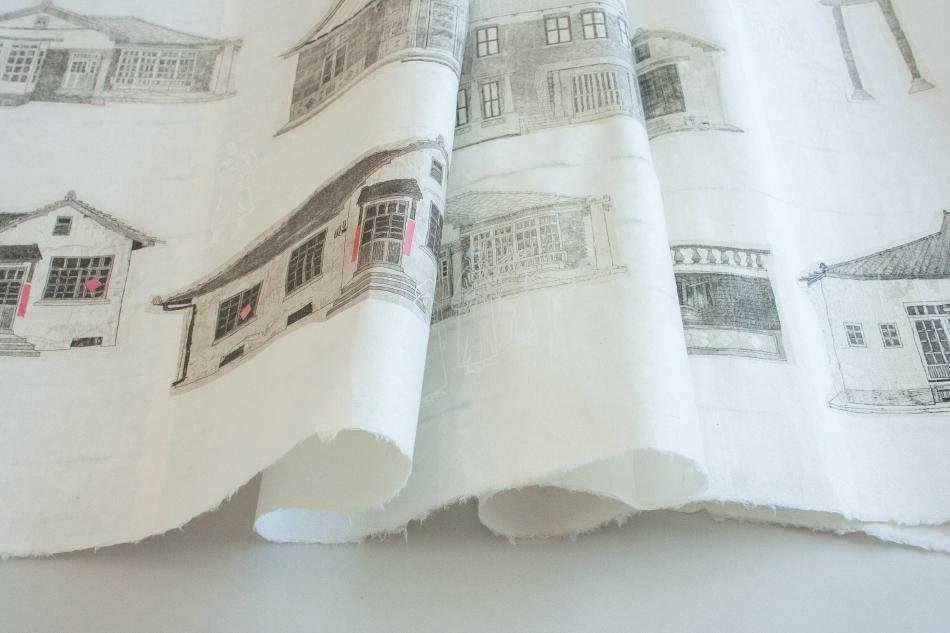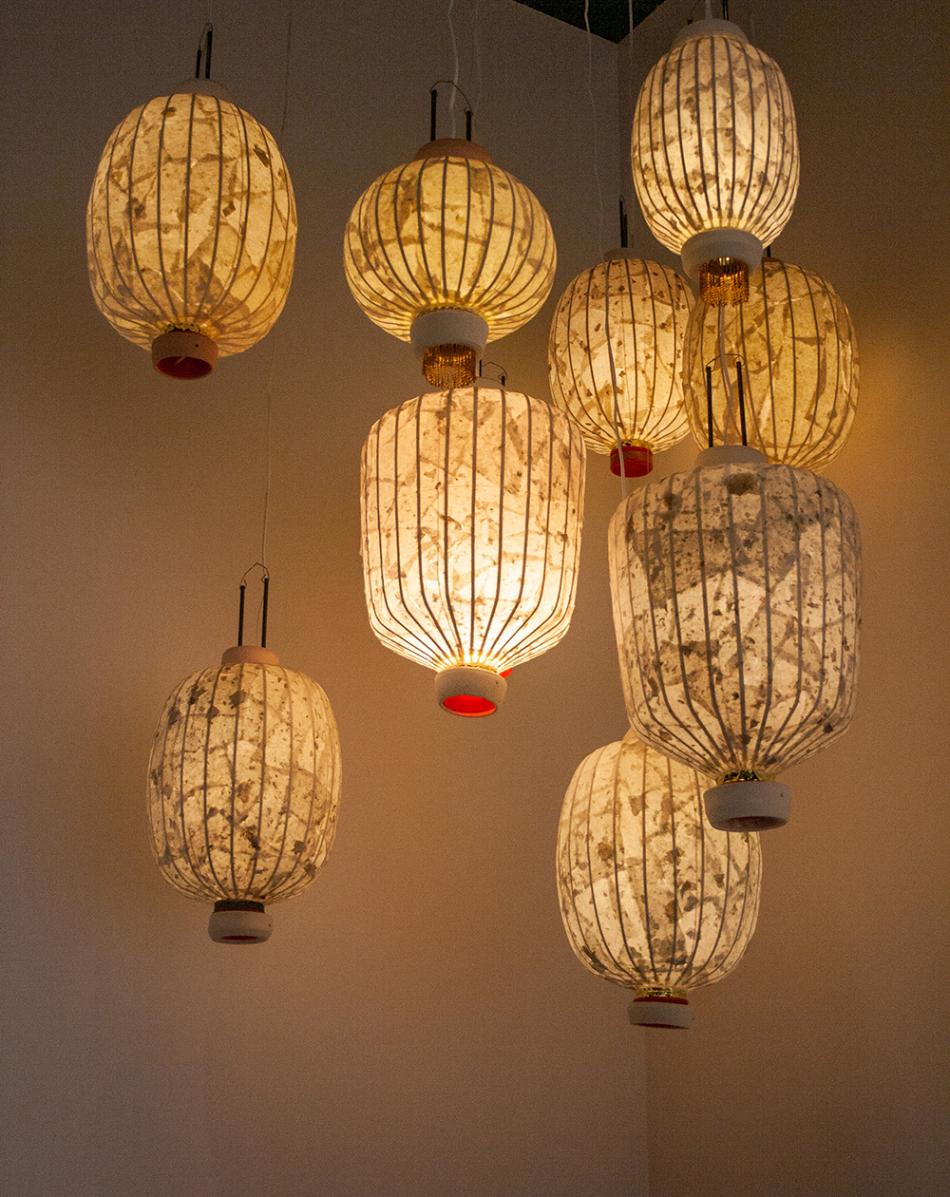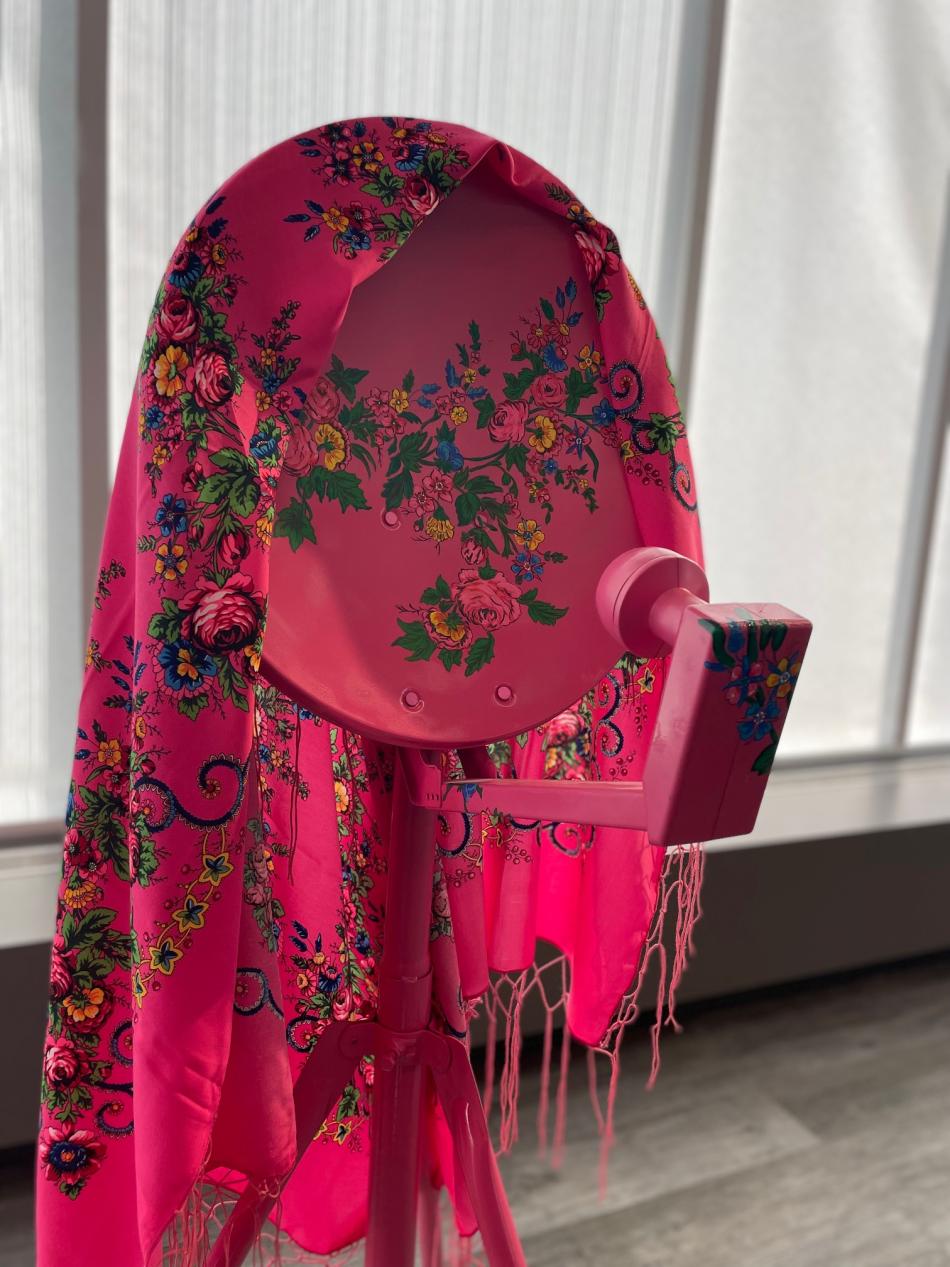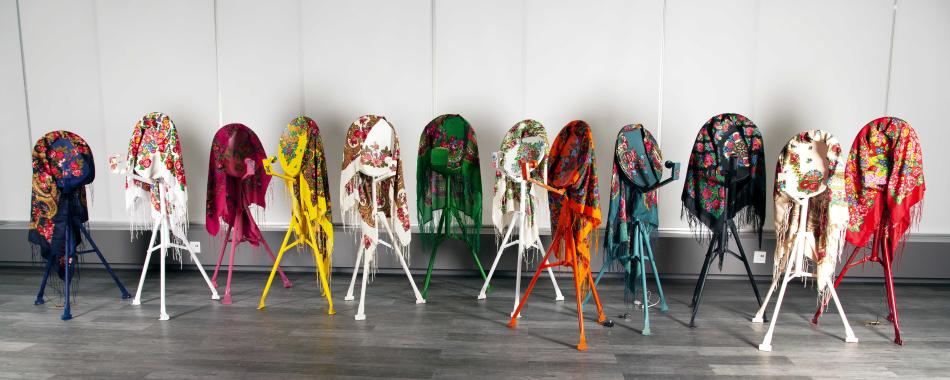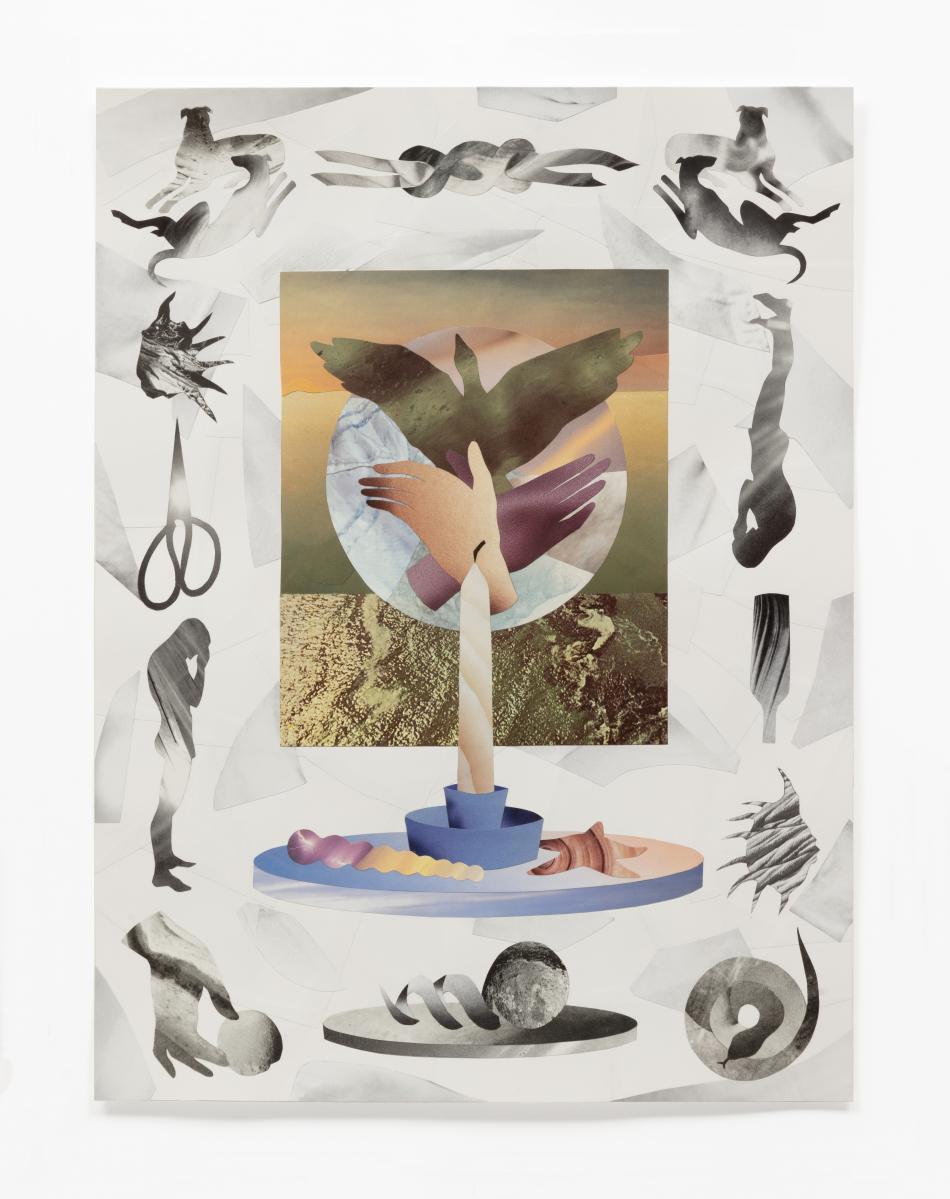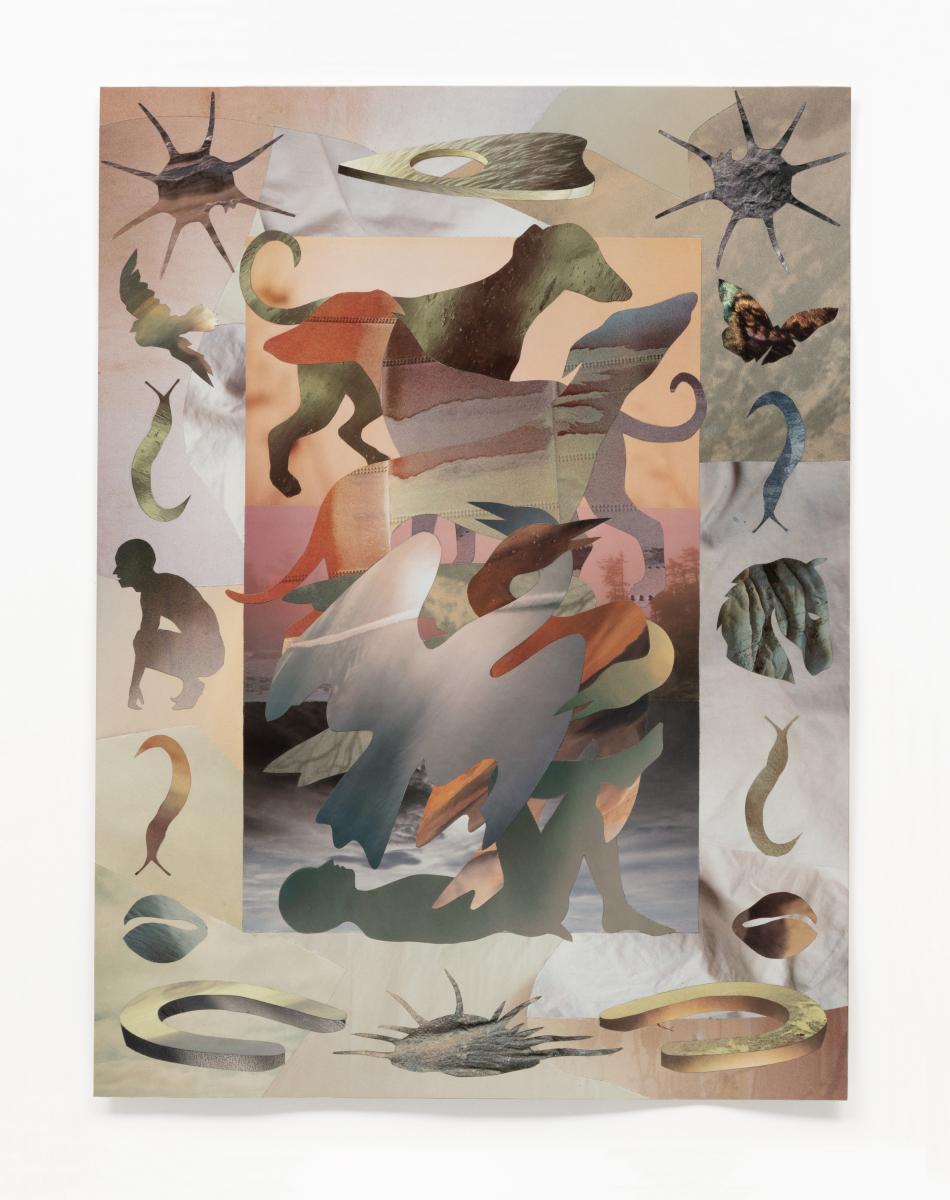Cut, Copy, Paste
Elham Fatapour, Edward Fu-Chen Juan, and David Woodward
- / James Gallery
Opening Reception: Friday, June 9 from 7:00-10:00 pm in Hamilton Artists Inc.’s ArcelorMittal Dofasco Courtyard
How do artists layer, sample, and manipulate existing materials to convey stories and ideas? How might creating work with found objects challenge consumerist values, envisioning a more sustainable relationship with materials? Collage, assemblage, and remix are creative tools which have historically been utilized to examine larger social, cultural, and political concerns.
Cut, Copy, Paste, brings together works by Elham Fatapour, Edward Fu-Chen Juan, and David Woodward which grapple with the critical potentials of collage and engage questions around ownership, adaptation, appropriation, environmentalism, and hybridity.
Cut, Copy, Paste – Exhibition Reflection
Madeleine Hopton
What has been built up, and what can be undone? This is a main line of inquiry that artists Elham Fatapour, Edward Fu-Chen Juan, and David Woodward encapsulate through the exhibition Cut, Copy, Paste (2023). Through processes of layering, blending, and re-orientation, Fatapour, Fu-Chen Juan, and Woodward engage traditional art-making practices and manipulate found objects and imagery in ways that challenge our visual understanding of their contents. Brought together, this body of work establishes a space through which spectators recognize our world in its many current states of crisis, while also envisioning possibilities for seeing the world differently.
In Elham Fatapour’s work, “homemade satellite dishes,” we see five objects, three clustered together and two spread out into either corner of the room. These objects are satellite dishes, standing and oriented so that they are pointed in different directions, shrouded in cloths and paint that are coloured black, white, pink, and a vibrant yellow. Fatapour emphasizes the significance of satellites in her understanding of today’s environment of surveillance, connection, and communication. She also describes the function of the satellites as a way to reach across nations, with the possibility of connecting back with home. In placing the satellites across from one another, as well as clustered together, their arrangement demonstrates the different ways in which satellites transmit information, making things known.
By covering the dishes with differently coloured and patterned cloth and paint, Fatapour investigates the role of camouflage, positioning the function of surveillance alongside the satellite dish’s presence within domestic environments. Through paint and cloth, Fatapour alters the objects so that they may appear further hidden within the context of their existence in private spaces, while making them hyper visible within the public gallery setting.
In Edward Fu-Chen Juan’s work titled “Village,” we see a long, partially un-rolled scroll that hangs in front of spaced-out warm lights. Upon the scroll are several different front-facing historic sites, and between these buildings we can see the shadowed images of individuals. In addition to the scroll, Fu-Chen Juan also exhibited, “Woodland Grove Lanterns,” a series of five lanterns which hang together in a cluster of varying heights, internally lit with a soft, glowing light that stays on for the duration of the exhibition. In the work, Fu-Chen Juan describes his intention of creating objects that speak to the acts of violence in martial-law-era in Taiwan, the efforts of Truth and Reconciliation that are ongoing, and his identity as a Taiwanese Canadian. The lanterns, which were created in Taiwan by a Hakka lantern family, were then shipped to Fu-Chen Juan by his parents. The lanterns themselves demonstrate not only the connection between people, family, and culture, but also, as Fu-Chen Juan describes, demonstrate the conceptual framework through which the scroll was created.
Using light, Fu-Chen Juan illuminates individuals upon the scroll, which additionally connects the spaces between the people and the historic buildings displayed. By emphasizing these figures, the highlighted bodies may be understood as individuals who were killed/removed from sites, with Fu-Chen Juan bringing them back into focus. Reflecting upon Fu-Chen Juan’s description of his work and process, which entails the many steps of creation in making the paper materials in addition to the construction and designs upon the objects, I was struck by how time and care are integral in understanding the work. The actions in creating this work can be thought of as a parallel to Fu-Chen Juan’s process in researching his cultural history, which requires time, continuous efforts in connecting with community, and care in how he brings together past and present while working with generationally traumatic materials.
In David Woodward’s works titled, “Shadows and Light,” “The Sound Inside a Shell,” and “Secret Gardens,” we see three large paper collages that are placed side by side, where each work contains a focal imagery (shadowed hands before candlelight, a person, bird, and dogs entangled with one another, and a moth upon a floral setting), each of which is bordered with other icons (vessels, organic matter, scissors, knots, human forms), which act as a frame for the central image. In creating these collages, Woodward uses found photography from books that document the natural world, which are then cut into “recognizable but unrelated shapes that might function as containers of placeholders for individual experience and memory.”
These forms relay Woodward’s intention of capturing the emotions of grief and anxiety that are felt towards our ongoing climate crisis. This is done through their exploration of 16th century style “Vanitas” paintings, which were created to document and illustrate the transience and excesses of life, as well as the imminence of death. While looking at each collage arrangement, I couldn’t help but think of the structural and systemic hierarchies and orders that make up much of human life, and the need to identify objects and patterns in order to appease our anxiety towards the unknown. The imagery chosen within each work, and the layering process between known photographs being transformed into new recognizable forms, makes me think about how objects relate to one another, as well as the significance of each object as they contribute to the whole. These works speak to the individual and communal experience of the climate crisis, where we are forced to confront our ever-changing landscape and consider the fragility of our present state of being.
Cut, Copy, Paste, an exhibition held between June 9th and August 12th, 2023, expertly considers the roles of collage, assemblage, and remix in the investigation and challenging of our ongoing social, cultural, ecological, and political concerns.
about the artists:
Elham Fatapour was born in Tehran, Iran and originally studied economics during her undergraduate degree. She is interested in political and social science in combination with storytelling, and these interests propelled her into the field of illustration. After studying this at Seneca College, she made the transition to the visual art. Currently she is based in Toronto and has studied MFA at York University in visual art. Her recent work includes painting, performance, and mixed media installation. This work takes up diverse but interconnected subjects including satellite usage, surveillance, vernacular architecture, modes of communication and empathy. Fatapour was awarded a Joseph Armand Bombardier Scholarship from the Social Sciences & Humanities Research Council of Canada for her visual art research at York University. Her on going ‘homemade satellite dishes’ series was the winner of the 2022 biennial art prize for the Surveillance Studies Network Conference and was presented at Rotterdam Erasmus University in June 2022.
Edward Fu-Chen Juan is a contemporary visual artist based in Vancouver, BC, the unceded territories of the xwməθkwəy׀əm (Musqueam), Sḵwxתwú7mesh (Squamish), and Sel׀íl׀witulh (Tsleil-Waututh) Nations. He identifies as a queer Taiwanese Canadian with ethnic roots from the Hakka and the Plains First Nation People of Taiwan. His art practice is printmaking on paper with water-based ink extracted from plant and insect ingredients. Presently, he has expanded his process to papermaking with unconventional plant fibres of significant cultural importance.
David Woodward is a queer, Toronto-based visual artist working predominantly in analog, paper collage using found media from used books and magazines. Since graduating from the Fine Art and Art History programs at Queen’s University (2013) their work has been exhibited in Canada and abroad in group and solo exhibitions. David has received project grants from the Toronto and Ontario Arts Councils (2017, 2020, 2021), as well as a Research and Creation Grant from the Canada Council for the Arts (2019) to support their work. David’s practice utilizes the medium of collage to find pathways between seemingly disparate visuals and sources with the aim of depicting everyday subjects that belie more complex understandings of the exterior world. Weaving personal elements of queer identity into a broader visual narrative that reflects on the intersections between individual and communal experience, their work explores ideas of interconnectedness, duality, and metamorphosis
